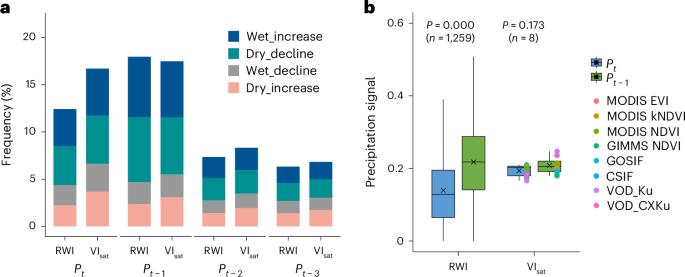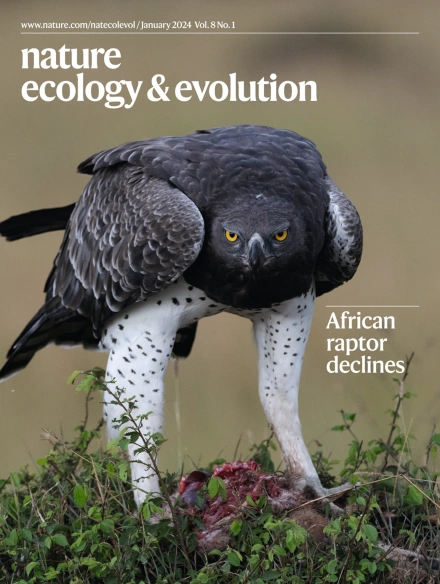Lagged precipitation effects on plant production across terrestrial biomes
IF 13.9
1区 生物学
Q1 ECOLOGY
引用次数: 0
Abstract
Precipitation effects on plant carbon uptake extend beyond immediate timeframes, reflecting temporal lags between rainfall and plant growth. Mechanisms and relative importance of such lagged effects are expected to vary across ecosystems. Here we draw on an extensive collections of productivity proxies from long-term ground measurements, satellite observations and model simulations to show that preceding-year precipitation exerts a comparable influence on plant productivity to current-year precipitation. Statistically supported lagged precipitation effects are detected in 13.4%–19.7% of the grids depending on the data source. In these sites, preceding-year precipitation positively controls current-year plant productivity in water-limited areas, while negative effects occur in some wet regions, such as tropical forests. While aridity emerges as the main driver of this spatial variability, machine learning-based spatial attribution also indicates interactions among plant traits, climatic conditions and soil properties. We also show that soil water dynamics, plant phenology and foliar structure might mediate lagged precipitation effects across time. Our findings highlight the role of preceding-year precipitation in global plant productivity. Precipitation is a key driver of plant growth. Here the authors integrate ground-based observations, remote sensing and process-based models to disentangle the relative contribution of preceding-year and current-year precipitation on plant productivity and identify its predictors across biomes.


滞后降水对陆地生物群系植物生产的影响
降水对植物碳吸收的影响超出了直接的时间范围,反映了降雨和植物生长之间的时间滞后。这种滞后效应的机制和相对重要性预计会因生态系统而异。在这里,我们从长期地面测量、卫星观测和模式模拟中广泛收集了生产力代理数据,以表明往年降水对植物生产力的影响与当年降水相当。根据数据源的不同,13.4% ~ 19.7%的网格存在统计支持的滞后降水效应。在这些地点,前一年的降水对缺水地区当年的植物生产力有积极的控制作用,而对一些潮湿地区,如热带森林,则有消极的影响。虽然干旱是这种空间变异性的主要驱动因素,但基于机器学习的空间归因也表明了植物性状、气候条件和土壤性质之间的相互作用。土壤水分动态、植物物候和叶面结构可能会介导降水滞后效应。我们的研究结果强调了前一年降水在全球植物生产力中的作用。
本文章由计算机程序翻译,如有差异,请以英文原文为准。
求助全文
约1分钟内获得全文
求助全文
来源期刊

Nature ecology & evolution
Agricultural and Biological Sciences-Ecology, Evolution, Behavior and Systematics
CiteScore
22.20
自引率
2.40%
发文量
282
期刊介绍:
Nature Ecology & Evolution is interested in the full spectrum of ecological and evolutionary biology, encompassing approaches at the molecular, organismal, population, community and ecosystem levels, as well as relevant parts of the social sciences. Nature Ecology & Evolution provides a place where all researchers and policymakers interested in all aspects of life's diversity can come together to learn about the most accomplished and significant advances in the field and to discuss topical issues. An online-only monthly journal, our broad scope ensures that the research published reaches the widest possible audience of scientists.
 求助内容:
求助内容: 应助结果提醒方式:
应助结果提醒方式:


